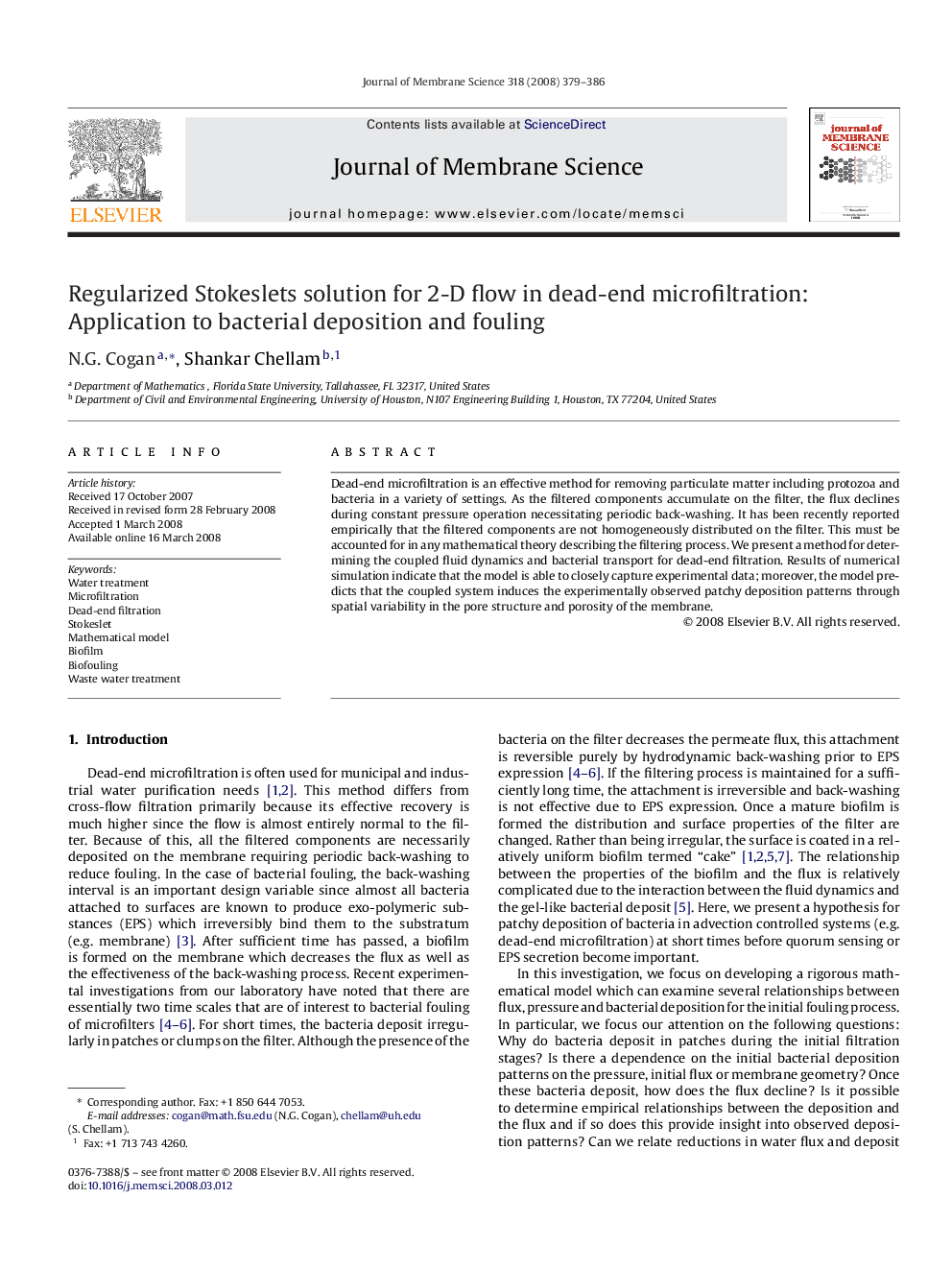| Article ID | Journal | Published Year | Pages | File Type |
|---|---|---|---|---|
| 637959 | Journal of Membrane Science | 2008 | 8 Pages |
Abstract
Dead-end microfiltration is an effective method for removing particulate matter including protozoa and bacteria in a variety of settings. As the filtered components accumulate on the filter, the flux declines during constant pressure operation necessitating periodic back-washing. It has been recently reported empirically that the filtered components are not homogeneously distributed on the filter. This must be accounted for in any mathematical theory describing the filtering process. We present a method for determining the coupled fluid dynamics and bacterial transport for dead-end filtration. Results of numerical simulation indicate that the model is able to closely capture experimental data; moreover, the model predicts that the coupled system induces the experimentally observed patchy deposition patterns through spatial variability in the pore structure and porosity of the membrane.
Keywords
Related Topics
Physical Sciences and Engineering
Chemical Engineering
Filtration and Separation
Authors
N.G. Cogan, Shankar Chellam,
